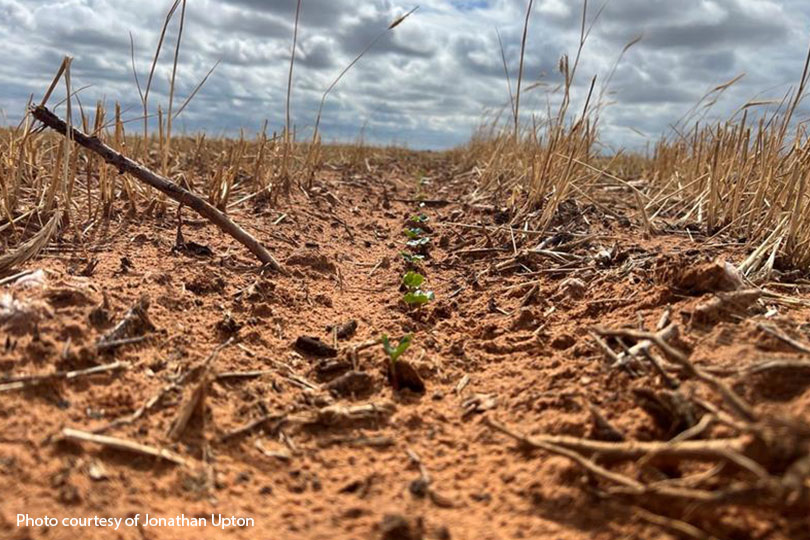By Emmy Powell
Communications Specialist
Farmers in the Texas South Plains have a different challenge this year—too much rain. After years of devastating drought, rain started falling in May, leading to flooded fields and to one of the wettest Mays on record for the area.
Farmers reported between three and 15 inches of rain.
That significantly impacted their ability to plant cotton, leaving some to not plant at all and others to plant when and as they could.
“It’s slowed us down. Our big rain was on the end of May, but we’d had several showers for the 10 days prior to that,” Ricky Yantis, who farms in Lamb County, said. “It made us play hopscotch with the planters trying to find dry spots to keep planting. We’ve been fortunate, but it’s still been troublesome.”
This year’s planting season is a stark contrast to 2022.
“Last year, we were dry, and we weren’t getting these little showers. So, we were through by May 28 easily,” he said. “The irrigated crops struggled to get started because it was so hot and dry and windy. This year, our dryland finally got enough rain to sprout it.”
Yantis noted that famers around him have received even more rain than he did.
The moisture brings some challenges this planting season, but farmers have more hope than last year.
“We went from bone dry to moisture that’s adequate and still troublesome to plant. Even though the challenges have been different, these challenges are a lot better than the dry one, because at least here you’re working toward a result of something,” Yantis said.
For other cotton farmers, rains have been spotty.
Jonathan Upton, who planted cotton in Gaines and Andrews counties, said he has received close to three inches of rain in May.
“Last year was pretty well a benchmark for the area for bad years. It was pretty terrible across the board,” he said. “This year, going into it, the rains have some positivity generated across the area.”
Even though the rain brings some complications, they are thankful for the moisture.
“We’re optimistic for the growing season. Maybe we can have some good fortune and have something to harvest,” Upton said.
The U.S. drought monitor shows drought conditions have reduced for the Panhandle and Southern Plains. The recent showers have provided needed relief from the long-lasting drought and hope for a more productive growing season.
“Out of my 5,000 acres last year, I harvested only 168 acres. This year, if it warms up and continues to rain periodically, it could be a very productive year. And that’s what I’m hoping for,” Yantis said.

